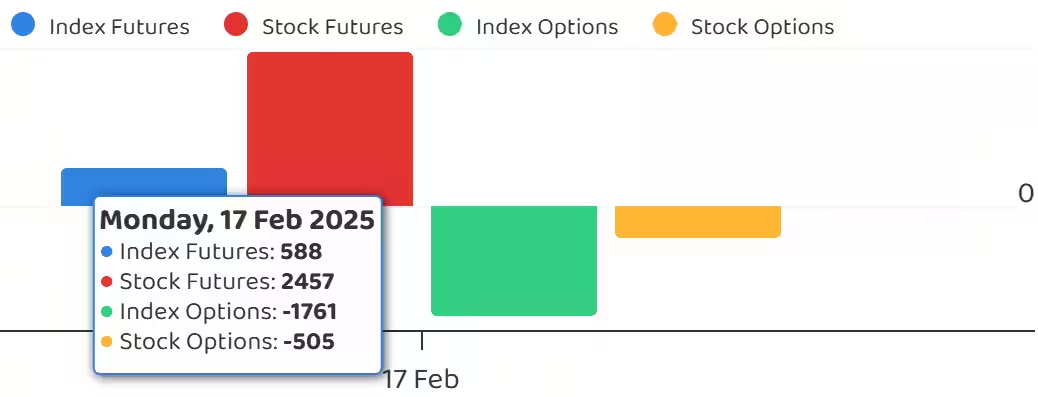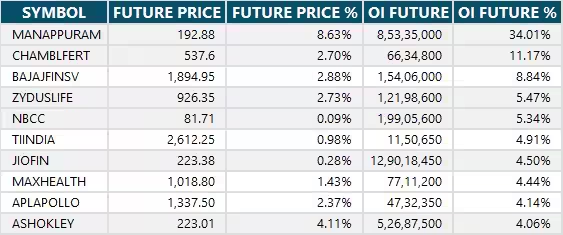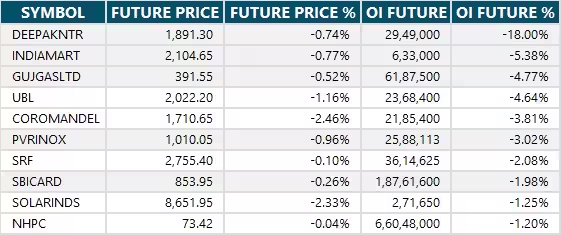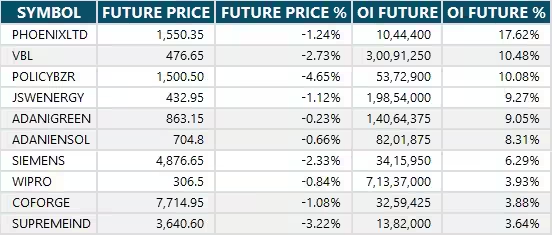18 Feb , 2025 By : Debdeep Gupta

The smart recovery of more than 200 points from the day's low helped the Nifty 50 snap an 8-day losing streak and close with a 30-point gain on February 17, after taking support at 22,700. However, the overall trend remains in favour of the bears, given the lower top-lower-bottom formation. If the index manages to extend the recovery and clear the psychological 23,000 mark, the immediate hurdle is likely to be between 23,150 and 23,300. But if it sustains below 23,000, the consolidation may continue, with support at 22,700. Below that, 22,500 is the level to watch, according to experts.
Here are 15 data points we have collated to help you spot profitable trades:
1) Key Levels For The Nifty 50 (22,960)
Resistance based on pivot points: 22,981, 23,040, and 23,135
Support based on pivot points: 22,791, 22,733, and 22,638
Special Formation: The Nifty 50 formed a bullish candlestick pattern with a minor lower shadow on the daily charts after hitting the bottom line of the Bollinger Bands, but it continued the lower high-lower low formation. The index remained below all key moving averages (10, 20, 50, 100, and 200-day EMAs), with a negative bias in momentum indicators. The RSI (Relative Strength Index) stands at 39, and the MACD (Moving Average Convergence Divergence) shows a negative crossover below the zero line, signaling weakness.
2) Key Levels For The Bank Nifty (49,259)
Resistance based on pivot points: 49,338, 49,525, and 49,828
Support based on pivot points: 48,731, 48,544, and 48,241
Resistance based on Fibonacci retracement: 49,409, 50,381
Support based on Fibonacci retracement: 47,864, 46,078
Special Formation: The Bank Nifty also formed a bullish candlestick pattern with a lower shadow on the daily charts, which is a positive sign. However, it remained in the lower band of the Bollinger Bands and below all key moving averages, continuing the lower high-lower low formation, signaling weakness. The index was up by 160 points.
3) Nifty Call Options Data
According to the weekly options data, the maximum Call open interest was seen at the 24,000 strike (with 1.17 crore contracts). This level can act as a key resistance for the Nifty in the short term. It was followed by the 23,500 strike (74.8 lakh contracts) and the 23,300 strike (74.16 lakh contracts).
Maximum Call writing was observed at the 23,700 strike, which saw an addition of 20.67 lakh contracts, followed by the 23,600 and 23,500 strikes, which added 14.87 lakh and 12.02 lakh contracts, respectively. The maximum Call unwinding was seen at the 23,950 strike, which shed 5.79 lakh contracts, followed by the 24,050 and 23,000 strikes, which shed 4.32 lakh and 3.45 lakh contracts, respectively.
4) Nifty Put Options Data
On the Put side, the 22,000 strike holds the maximum Put open interest (with 1.02 crore contracts), which can act as a key support level for the Nifty. It was followed by the 22,500 strike (61.18 lakh contracts) and the 22,600 strike (56.14 lakh contracts).
The maximum Put writing was placed at the 22,600 strike, which saw an addition of 33.6 lakh contracts, followed by the 22,000 and 22,250 strikes, which added 27.46 lakh and 20.34 lakh contracts, respectively. The maximum Put unwinding was seen at the 22,500 strike, which shed 4.98 lakh contracts, followed by the 23,100 and 23,200 strikes, which shed 1.54 lakh and 1 lakh contracts, respectively.
5) Bank Nifty Call Options Data
According to the monthly options data, the 51,000 strike holds the maximum Call open interest, with 17.22 lakh contracts. This can act as a key resistance level for the index in the short term. It was followed by the 50,000 strike (13.02 lakh contracts) and the 50,500 strike (12.25 lakh contracts).
Maximum Call writing was visible at the 50,600 strike (with the addition of 64,950 contracts), followed by the 51,500 strike (62,130 contracts) and the 50,500 strike (60,030 contracts). The maximum Call unwinding was seen at the 50,000 strike, which shed 1.44 lakh contracts, followed by the 49,500 and 49,600 strikes, which shed 86,370 and 75,000 contracts, respectively.
6) Bank Nifty Put Options Data
On the Put side, the maximum Put open interest was seen at the 49,000 strike (with 12.84 lakh contracts), which can act as a key support level for the index. This was followed by the 48,000 strike (11.9 lakh contracts) and the 50,000 strike (8.05 lakh contracts).
The maximum Put writing was observed at the 48,700 strike (which added 70,440 contracts), followed by the 48,900 strike (67,230 contracts) and the 49,200 strike (66,390 contracts). The maximum Put unwinding was seen at the 50,000 strike, which shed 39,780 contracts, followed by the 50,100 and 49,800 strikes which shed 36,120 and 32,940 contracts, respectively.
7) Funds Flow (Rs crore)

8) Put-Call Ratio
The Nifty Put-Call ratio (PCR), which indicates the mood of the market, climbed to 0.87 on February 17, against 0.77 in the previous session.
The increasing PCR, or being higher than 0.7 or surpassing 1, means traders are selling more Put options than Call options, which generally indicates the firming up of a bullish sentiment in the market. If the ratio falls below 0.7 or moves towards 0.5, then it indicates selling in Calls is higher than selling in Puts, reflecting a bearish mood in the market.
9) India VIX
The India VIX, the fear index that measures the expected market volatility, jumped by 4.71 percent to 15.72. The index extended its upward journey for the sixth consecutive session and climbed above all key moving averages, further adding discomfort for bulls.
10) Long Build-up (83 Stocks)
A long build-up was seen in 83 stocks. An increase in open interest (OI) and price indicates a build-up of long positions.

11) Long Unwinding (22 Stocks)
22 stocks saw a decline in open interest (OI) along with a fall in price, indicating long unwinding.

12) Short Build-up (59 Stocks)
59 stocks saw an increase in OI along with a fall in price, indicating a build-up of short positions.

13) Short-Covering (67 Stocks)
67 stocks saw short-covering, meaning a decrease in OI, along with a price increase.

14) High Delivery Trades
Here are the stocks that saw a high share of delivery trades. A high share of delivery reflects investing (as opposed to trading) interest in a stock.

15) Stocks Under F&O Ban
Securities banned under the F&O segment include companies where derivative contracts cross 95 percent of the market-wide position limit.
Stocks added to F&O ban: Manappuram Finance
Stocks retained in F&O ban: Deepak Nitrite
Stocks removed from F&O ban: Nil
0 Comment